This dramatic infrared image shows the nearby star formation region Monoceros R2, located some 2700 light-years away in the constellation of Monoceros (the Unicorn). The picture was created from exposures in the near-infrared bands Y, J, and Ks taken by the VISTA survey telescope at ESO’s Paranal Observatory. Monoceros R2 is an association of massive hot young stars illuminating a beautiful collection of reflection nebulae, embedded in a large molecular cloud. Credit: ESO/J. Emerson/VISTA. Acknowledgment: Cambridge Astronomical Survey Unit
This very detailed enhanced-color image from ESO’s Very Large Telescope shows the dramatic effects of very young stars on the dust and gas from which they were born in the star-forming region NGC 6729. The baby stars are invisible in this picture, being hidden behind dust clouds at the upper left of the picture, but the material they are ejecting is crashing into the surroundings at speeds that can be as high as one million kilometers per hour. This picture was taken by the FORS1 instrument and records the scene in the light of glowing hydrogen and sulfur. Credit: ESO/Sergey Stepanenko
With this remarkable VISTA mosaic we look deep into the dusty heart of our own Milky Way galaxy in the constellation of Sagittarius (the Archer). About one million stars are revealed in this picture, most of them not seen in visible light pictures. As well as absorbing light, the dust also scatters blue light from the distant stars and makes the central part of this huge starscape appear very red. This image is a mosaic created from VISTA images taken through Y, J, and Ks filters in the near-infrared part of the spectrum. The image is about 2 degrees by 1.5 degrees in extent. The total exposure time for this mosaic was only 80 seconds. Credit: ESO/VISTA. Acknowledgment: Cambridge Astronomical Survey Unit
This image of the luminous blue variable Eta Carinae was taken with the NACO near-infrared adaptive optics instrument on ESO’s Very Large Telescope, yielding an incredible amount of detail. The images clearly show a bipolar structure as well as the jets coming out from the central star. The image was obtained by the Paranal Science team and processed by Yuri Beletsky (ESO) and Hännes Heyer (ESO). It is based on data obtained through broad (J, H, and K; 90-second exposure time per filter) and narrow-bands (1.64, 2.12, and 2.17 microns; probing iron, molecular and atomic hydrogen, respectively; 4 min per filter). Credit: ESO
This image from the Wide Field Imager on the MPG/ESO 2.2-meter telescope at ESO’s La Silla Observatory in Chile, shows the bright star cluster NGC 6520 and its neighbor, the strangely shaped dark cloud Barnard 86. This cosmic pair is set against millions of glowing stars from the brightest part of the Milky Way — a region so dense with stars that barely any dark sky is seen across the picture. Credit: ESO
This image from ESO’s Very Large Telescope Interferometer is one of the sharpest color images ever made. It shows the Mira-like star T Leporis in great detail. The central disc is the surface of the star, which is surrounded by a spherical shell of molecular material expelled from the star. In order to appreciate the feat of such measurement, one should realize that the star appears, on the sky, as small as a two-story house on the Moon. The resolution of the image is about 4 milli-arcseconds.
In this image, obtained by combining hundreds of interferometric measurements, the blue channel includes infrared light from 1.4 to 1.6 micrometers, the green, from 1.6 to 1.75 micrometers, and the red, from 1.75 to 1.9 micrometers. In the green channel, the molecular envelope is thinner, and appears as a thin ring around the star. Credit: ESO/J.-B. Le Bouquin et al.
This wide-field view of the sky around the bright star Alpha Centauri was created from photographic images forming part of the Digitized Sky Survey 2. The star appears so big just because of the scattering of light by the telescope’s optics as well as in the photographic emulsion. Alpha Centauri is the closest star system to the Solar System. Credit: ESO/Digitized Sky Survey 2 Acknowledgement: Davide De Martin
This image, captured with the VISTA infrared survey telescope, as part of the Variables in the Via Lactea (VVV) ESO public survey, shows the central part of the Milky Way. While normally hidden behind obscuring dust, the infrared capabilities of VISTA allow to study the stars close to the galactic center.
Within this field of view astronomers detected several ancient stars, of a type known as RR Lyrae. As RR Lyrae stars typically reside in ancient stellar populations over 10 billion years old, this discovery suggests that the bulging center of the Milky Way likely grew through the merging of primordial star clusters. Credit: ESO/VVV Survey/D. Minniti
This view shows part of the very active star-forming region around the Tarantula Nebula in the Large Magellanic Cloud, a small neighbor of the Milky Way. At the exact center lies the brilliant but isolated star VFTS 682 and to its lower right the very rich star cluster R 136. The origins of VFTS 682 are unclear — was it ejected from R 136 or did it form on its own? The star appears yellow-red in this view, which includes both visible-light and infrared images from the Wide Field Imager at the 2.2-meter MPG/ESO telescope at La Silla and the 4.1-meter infrared VISTA telescope at Paranal, because of the effects of dust. Credit: ESO/M.-R. Cioni/VISTA Magellanic Cloud survey. Acknowledgment: Cambridge Astronomical Survey Unit
This unprecedented image of Herbig-Haro object HH 46/47 combines radio observations acquired with the Atacama Large Millimeter/submillimeter Array (ALMA) with much shorter wavelength visible light observations from ESO’s New Technology Telescope (NTT). The ALMA observations (orange and green, lower right) of the newborn star reveal a large energetic jet moving away from us, which in the visible is hidden by dust and gas. To the left (in pink and purple) the visible part of the jet is seen, streaming partly toward us. Credit: ESO/ALMA (ESO/NAOJ/NRAO)/H. Arce. Acknowledgments: Bo Reipurth

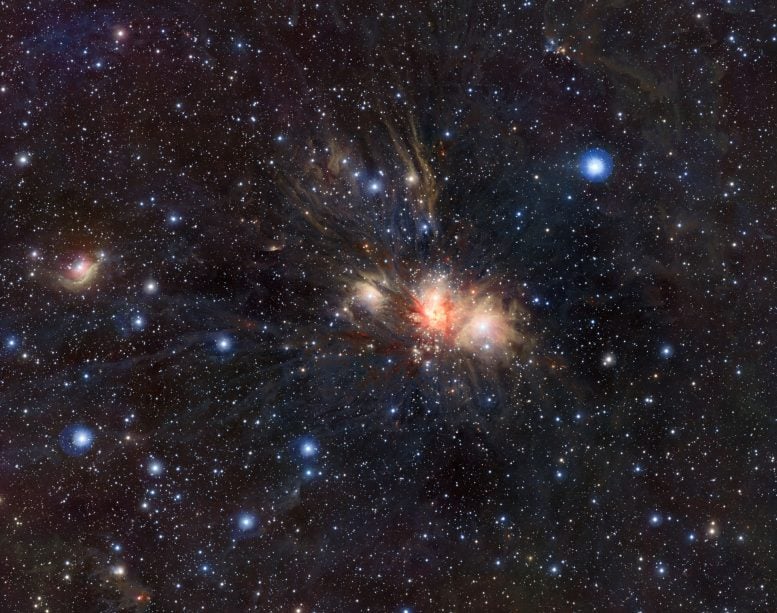
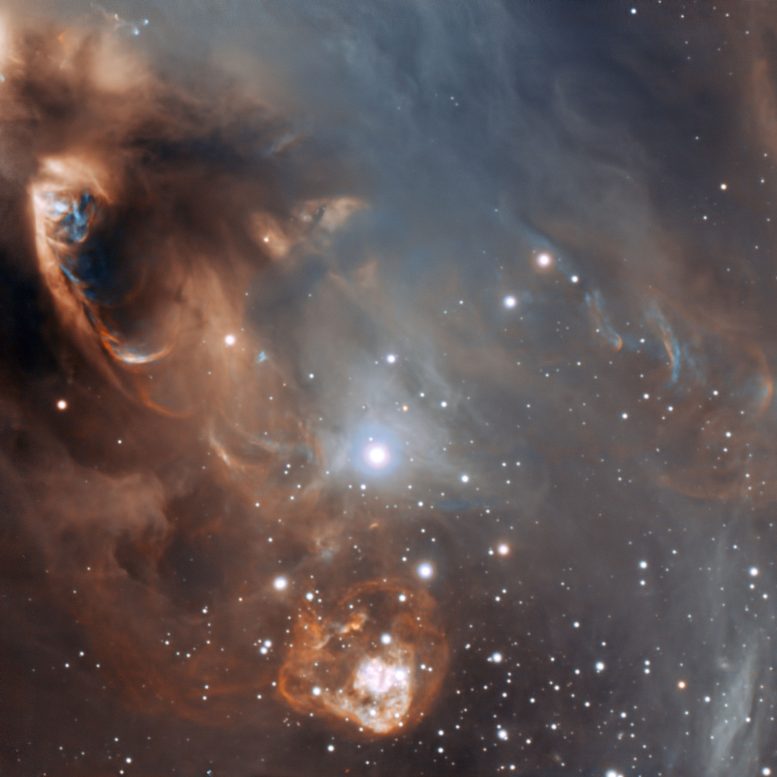
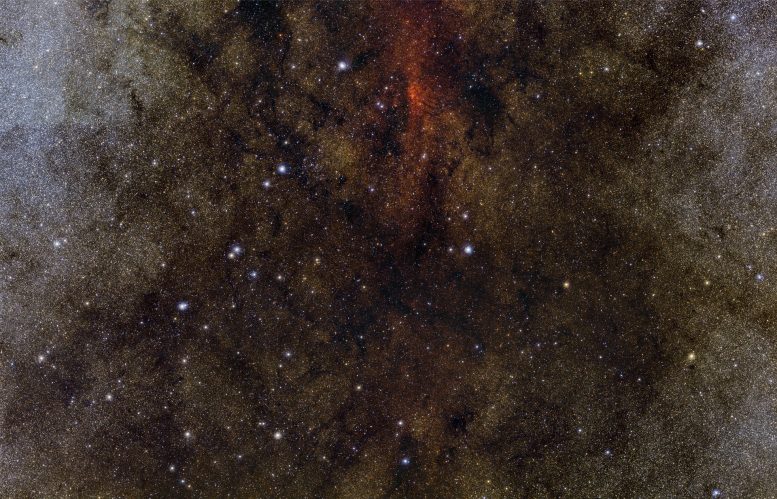
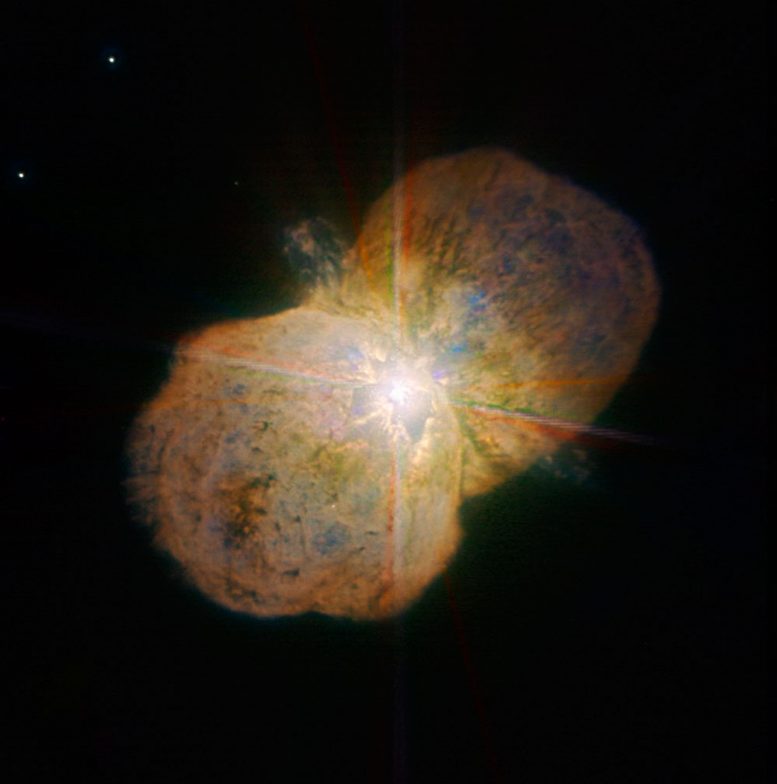
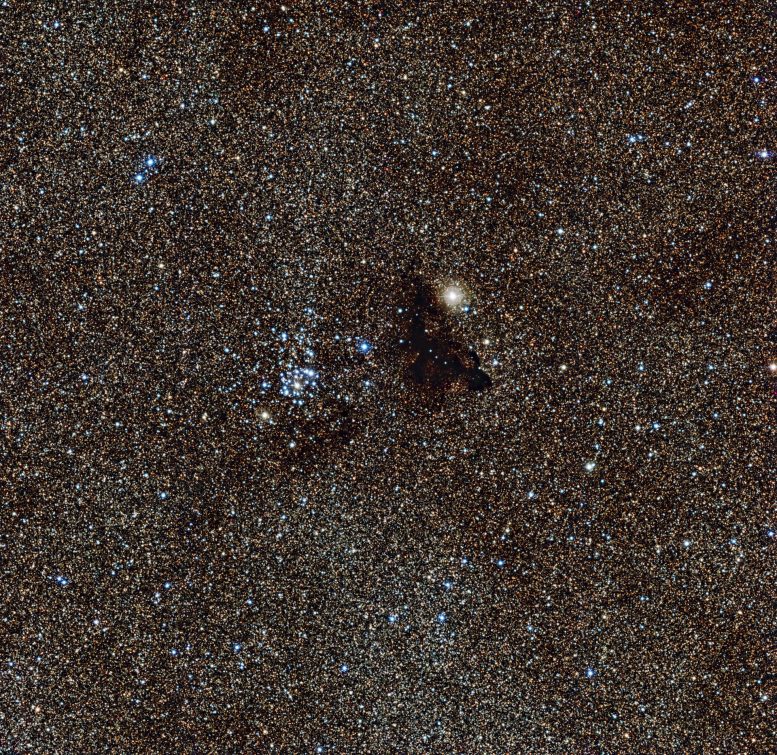
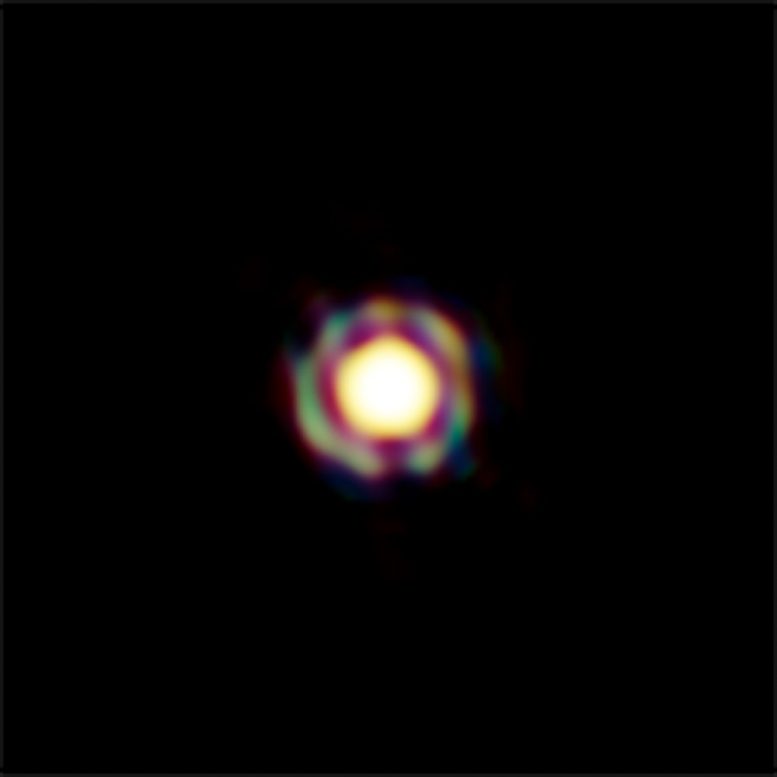
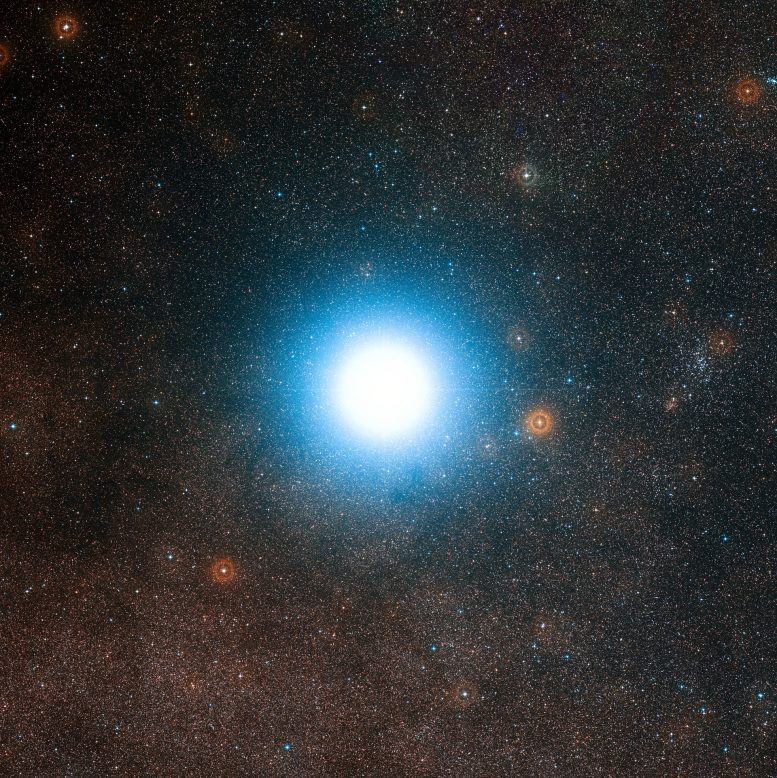
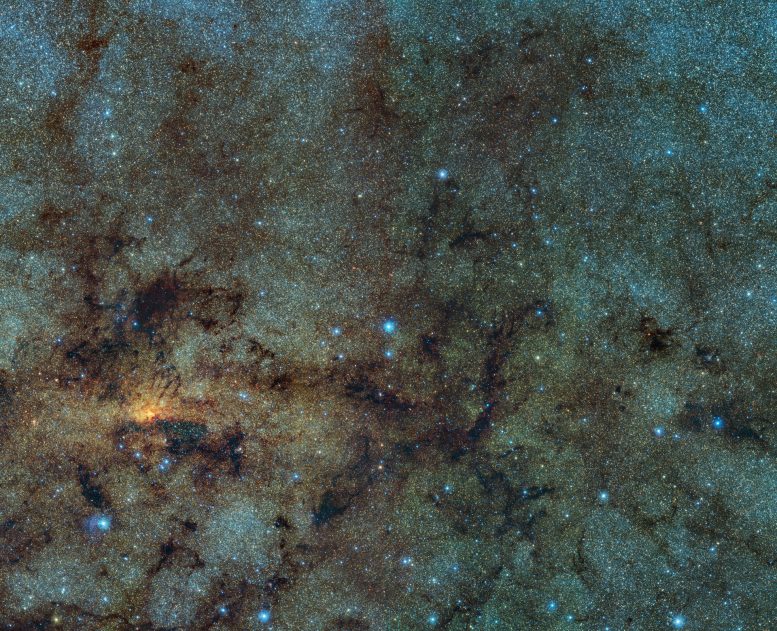
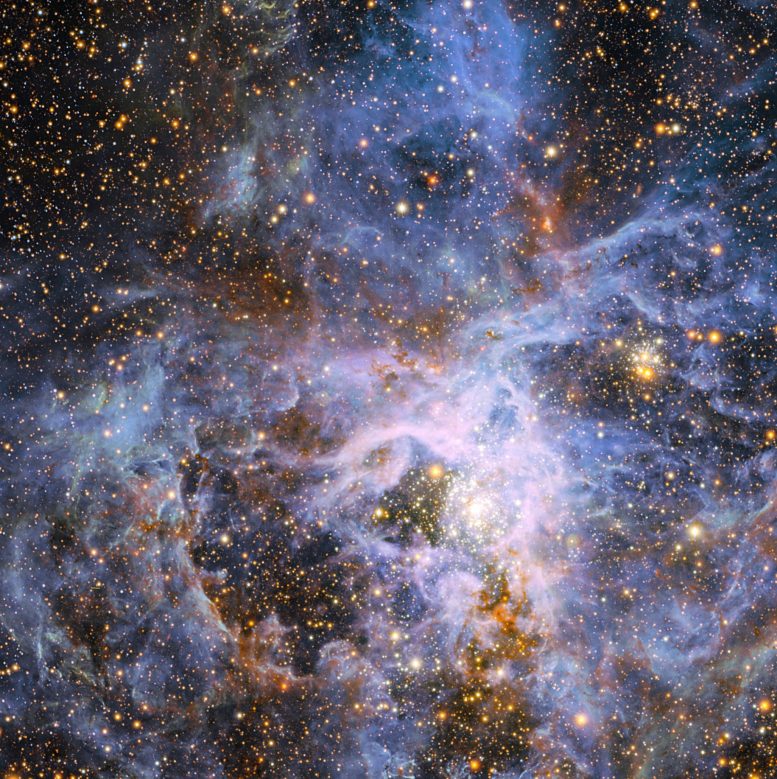
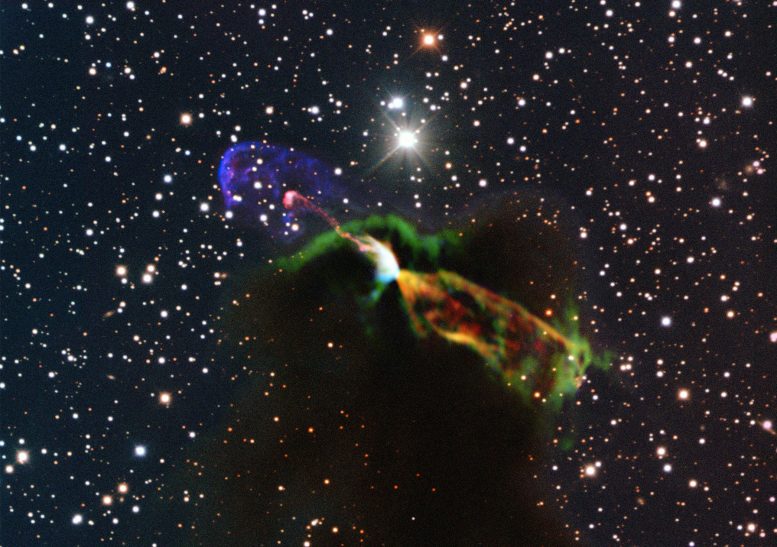
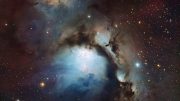
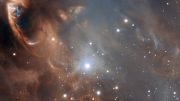

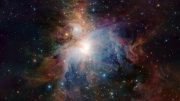
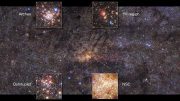

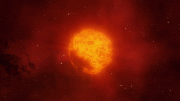
Be the first to comment on "These Striking Star Images Will Brighten Your Day"